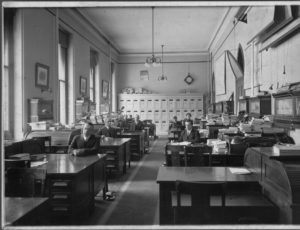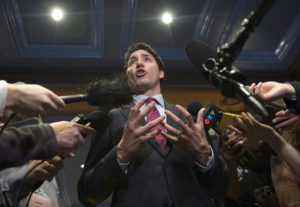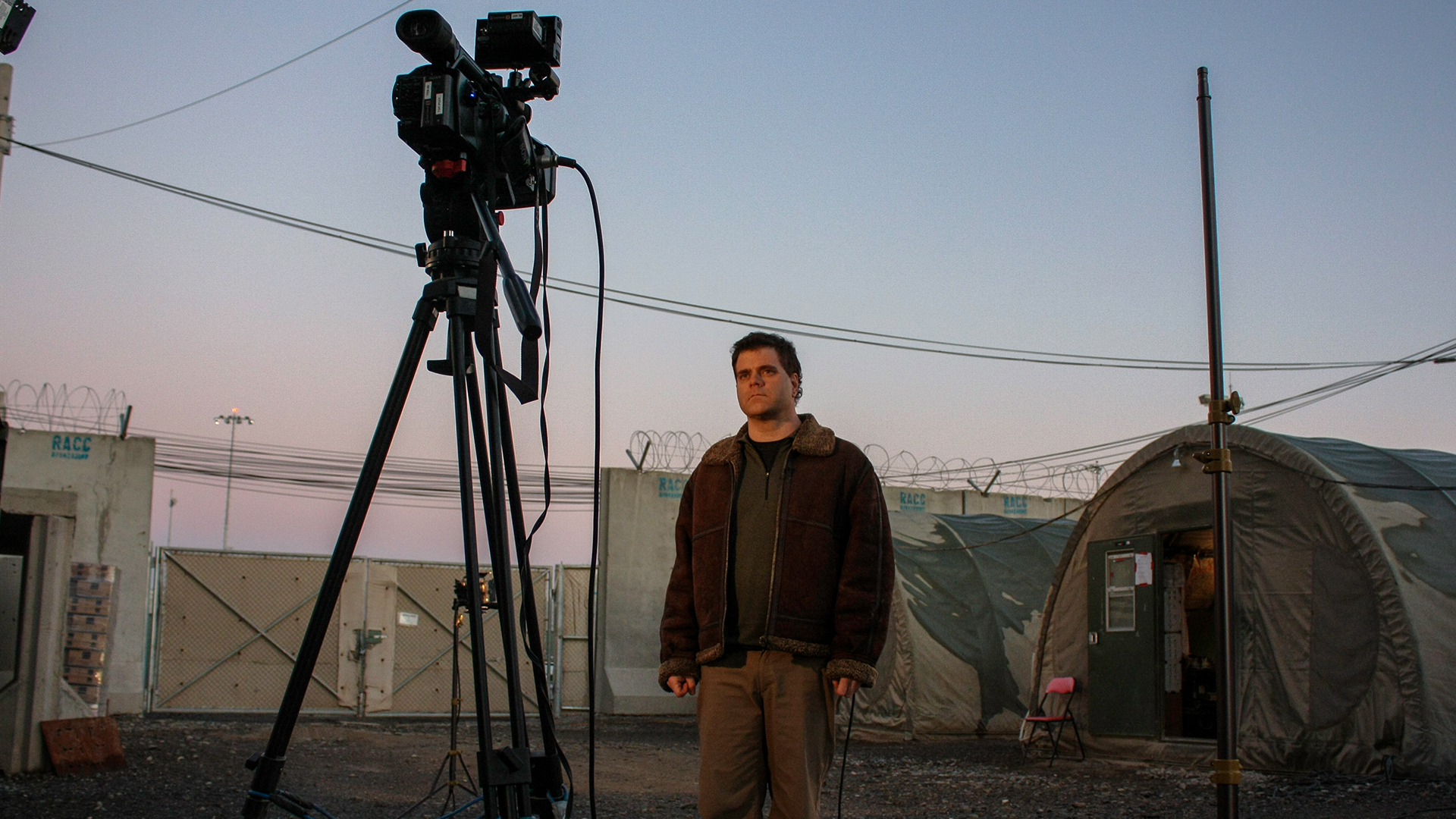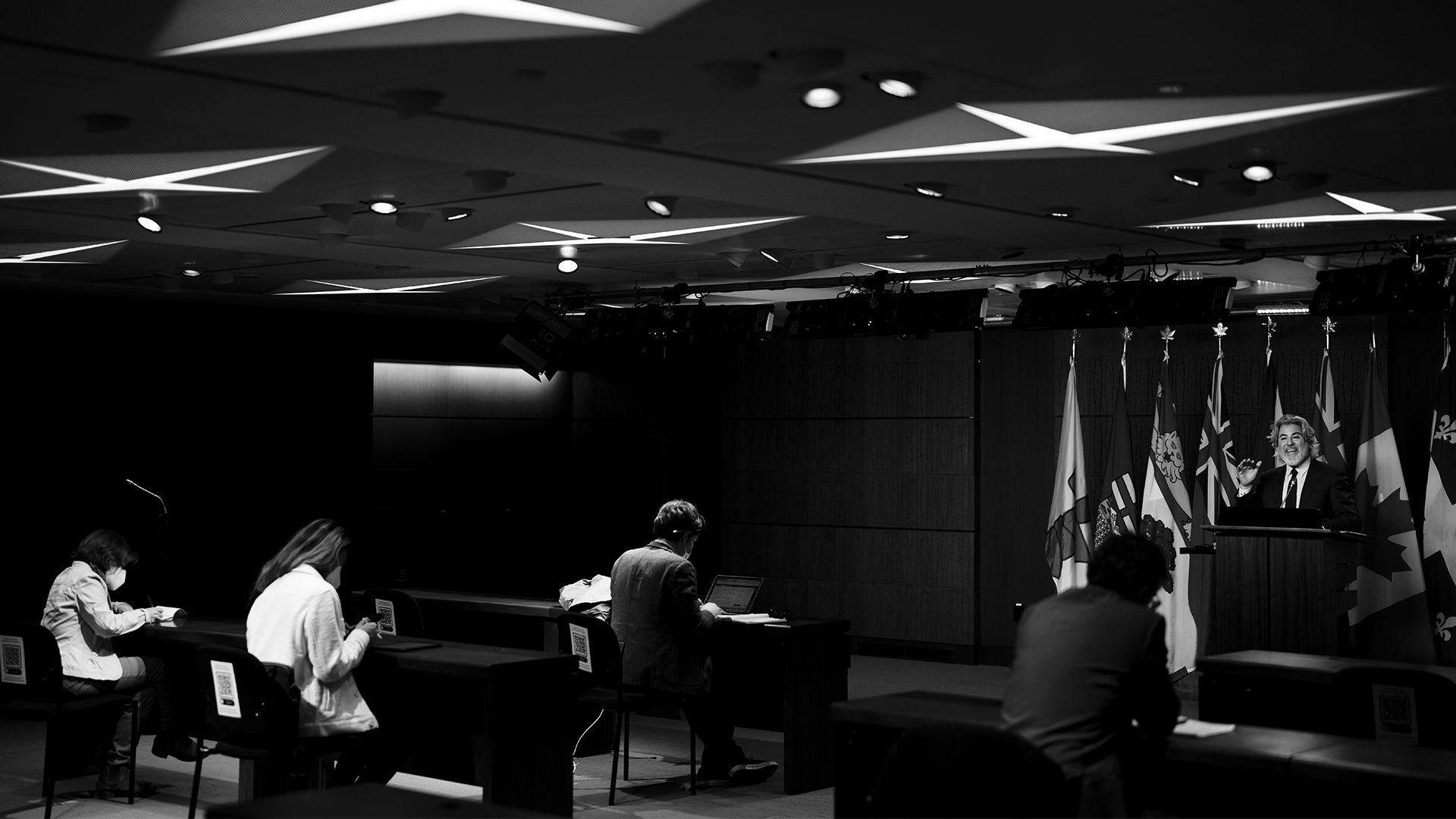
It is hard enough deciding who is a journalist without delegating the decision to a judge in the midst of an election campaign — or for that matter the Parliamentary Press Gallery. Last week, a judge ordered that three men from two right-wing outfits, Rebel Media and the True North Centre for Public Policy, be accredited as journalists to attend the party leaders’ debate. The judge has not yet given his reasons for the decision, but the Leaders Debates Commission reportedly argued in court that they should not be included because of their history of advocacy, which it argued precludes them from being accredited as journalists.
When you think of it historically, the idea that advocacy is inconsistent with journalism is a strange one. Historically, “advocacy” was no bar to being a journalist; in many cases it was its hallmark. Otherwise, what are we to make of Joseph Howe’s Novascotian, which excoriated the magistrates and police? Or George Brown’s Globe, which attacked slavery and Catholicism with equal vehemence? The motto that Brown chose and still adorns its successor, the Globe and Mail, presents a masterclass in journalistic passive aggressiveness: “The subject who is truly loyal to the Chief Magistrate will neither advise nor submit to arbitrary measures.”
In contrast, the model of journalism that many people, including many journalists, carry around in their heads nowadays, where concepts such as balance, fairness and objectivity reign, is primarily a 20th-century construct. It arose from a combination of circumstances, including the commercial pressures on newspapers in medium and small markets to appeal to readers across the political spectrum, the emergence of wire services catering to outlets of different political stripes, and the invention of broadcasting, which led to a combination of publicly owned and highly regulated privately owned broadcasters. It was also connected with the attempt to turn reporters, essentially a trade in the 19th century plied mainly by members of the educated working class, into a “profession,” supported by journalism schools, which were also a 20th– century phenomenon.
However, the earliest champions of press freedom, such as John Peter Zenger, who fought off a libel charge from the royal governor in the colony of New York in the 1730s (after languishing in jail for a time) were defending advocacy on the basis that it was truthful, even if defamatory. When James Madison composed his draft of the US Constitution’s First Amendment, he conceived of freedom of the press as part of a wider set of liberties such as freedom of speech and religion, which were obviously not bounded by standards of fairness or objectivity.

When you think of it, anyone can speak and anyone can have a religious viewpoint. The real difference between these rights and press freedom is that until very recently relatively few people had ready access to a printing press. In other words, the right to freedom of the press was always circumscribed by sheer logistics. Until roughly the dawn of the 21st century, one of the many differences between you and Conrad Black was that he had access to a printing press and you didn’t. (When Black re-entered the Canadian market in a big way about that time, by the way, he explicitly sought for the National Post to be a “crusading newspaper.”)
This logistical difference between the press and other forms of expressive liberty led to a media tradition that was in fact much narrower than the precepts espoused by Madison and Thomas Jefferson at the Constitutional Convention in 1787, which were then finally transposed into our own Charter of Rights and Freedoms in 1982. The modern media have always imposed limits on the spectrum of views they would tolerate.
If you look at the formal statements of major news organizations such as the CBC or the Globe and Mail, they are replete with boasts that they carry a diversity of views; but they say relatively little about the limits to that diversity. Yet you are unlikely to see a supporter of ISIS get a weekly column or even an occasional op-ed. And Rosemary Barton is not about to add a dash of spice to her weekly panel by, say, adding an alt-right figure such as Faith Goldy. This is true even though we know there are Canadians who hold such views.
The best explanation I have seen of the structure of permitted expression in the media was articulated by an American scholar, Daniel Hallin, at the time of the Vietnam war. Hallin described what he called “three spheres” in journalistic discourse. The first is the sphere of consensus. This includes topics on which the media take the view that consensus is so broad that no opposing view needs to be offered. So, journalists take for granted that slavery is bad, for example, and that democracy is preferable to dictatorship. They feel no need to offer “balance” or another point of view when touching on such topics.
The second is the sphere of legitimate controversy. In the current election campaign, this sphere would include the debate about the size of the deficit and the speed with which it should be addressed, the question of whether to adopt a national pharmacare plan, and whether to build a pipeline. In this sphere, reporters feel a responsibility to maintain neutrality, to “balance” their reports and to maintain a personal disinterest in the outcome of the debates they are reporting on. In this zone, columnists and editorial boards are free to weigh in with their views.
The third is the sphere of deviance. These are ideas such as those I described above, espoused by ISIS or neo-Nazis, which are considered outside the sphere of legitimate discourse, and might also include ideas that are regarded as laughable, ridiculous or simply unfounded. They might be covered as news events but the substance of their arguments is dismissed. Nowadays, this sphere can include people such as climate deniers and anti-vaxxers.
These last two examples point to an important feature of the spheres: that they are constantly in flux as a result of social and journalistic controversy. A decade ago, it was not unusual for a news story on climate change to go out of its way to quote what we now call a climate denier as a way to balance a story. Today it is unusual, and when it happens it is referred to as “false balance” in journalistic circles. Something similar is happening with the debate over vaccinations, with the anti-vaxxers well on their way to the sphere of deviance.
The reason that many people were so angry with the Globe and Mail when it afforded Ezra Levant the platform of its op-ed page early in the election campaign was that it appeared to move someone who was well on his way into the sphere of deviance back into the sphere of legitimate controversy.
Although from a libertarian perspective it is easy to criticize the imposition of the strictures of the three spheres as the arrogant pronouncements of a media (and perhaps corporate) elite, it is not hard to see how they play a cohesive role in our society. Most obviously, it is conducive to a peaceful, orderly, happy society that we don’t give platforms to those who question the full humanity of people of colour or of women or who advocate violence in the pursuit of their political aims.
That having been said, the ability of the mainstream media to police and arbitrate those spheres is now under radical attack in two ways. First of all, the internet has destroyed many of the barriers to entry into the media. You no longer need a printing press or a broadcasting tower to publish. You just need a WordPress account and a server somewhere. Any idiot can get on Twitter. (As you may have noticed, many do.)
Secondly — and this could be a related phenomenon — the sphere of consensus is breaking down in many Western countries. It might be too much to say that there is no longer a broad consensus, for example, that democracy is preferable to authoritarianism, but we have seen the emergence of Strongman-envy in the slaverings of Donald Trump and some of his supporters. A survey in the United States last year found that while 84 percent of seniors agreed that democracy is “always preferable” to other systems of government, that was true of only 55 percent of those aged 18-29. The erosion of a consensus about democracy appears to be happening in many Western countries and though there is disagreement about the degree to which this is happening in Canada, it would be foolish to assume we are immune.
Thus, at the same time as the media’s quasi-monopoly on the printing presses and their modern-day equivalents are eroding their ability to enforce ideas of consensus and deviance, the bulwarks of the old consensus are also under attack.

The issue of who is a journalist in this election campaign has mixed up two debates. The first is one about the guild privilege as exercised by the Parliamentary Press Gallery (and other similar organizations) to which the Debates Commission, like Parliament itself, had contracted out the responsibility to decide who could be accredited. This is where the would-be journalists from the Rebel and True North had their strongest case and on which, I am guessing, the judge decided the matter.
The Gallery, which is still dominated, though not as exclusively as it once was, by big traditional media, has spent the last two decades working through the thorny issues of who would get access to the hallowed halls of Parliament as waves of bloggers, start-up internet websites, quasi-lobbyists, hobbyists and, yes, advocacy groups clamoured for admittance to the club. This is an issue the Gallery has had to manage for logistical reasons if nothing else, and the politicians have been happy to let them do it rather than wading into the thorny issue of who is a journalist themselves.
But whatever you think of the Gallery’s attempt to negotiate these shoals, its guiding principle has not been a commitment to that popular contemporary image of journalism as free, open, balanced, objective news coverage. The “tell” could be that the current membership of the Gallery includes a correspondent from the TASS news agency, as it has done since the Soviet era, and also one from the People’s Daily, the official newspaper of the Communist Party of China.
The much more challenging debate than the one the Gallery, the debate commission and the judge are effectively squabbling over is whether there is still a degree of consensus in our society that makes it worthwhile trying to wall off a zone of legitimate controversy from those who would challenge fundamental values, for example, about democracy, race and gender; what the limits of that zone should be; and who should enforce them. And if we were to decide that such a zone is worth defending, would it even be possible in the age of the internet?
Photo: Prime minister Pierre Trudeau speaks to journalists, 1984. Library and Archives Canada. Item ID 4558086.
Do you have something to say about the article you just read? Be part of the Policy Options discussion, and send in your own submission. Here is a link on how to do it. | Souhaitez-vous réagir à cet article ? Joignez-vous aux débats d’Options politiques et soumettez-nous votre texte en suivant ces directives.






